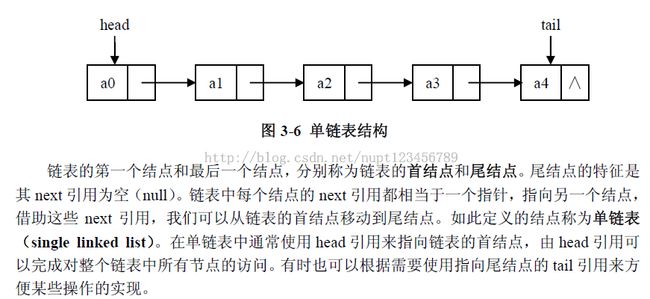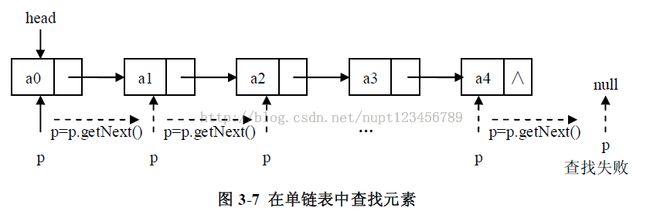重温数据结构:单链表的常见问题总结
1.单链表的常见问题:
* 求单链表中结点的个数: getListLength
* 将单链表反转: reverseList(遍历),reverseListRec(递归)
* 查找单链表中的倒数第K个结点(k > 0): reGetKthNode
* 查找单链表的中间结点: getMiddleNode (快慢指针)
* 从尾到头打印单链表: reversePrintListStack,reversePrintListRec(递归)
* 已知两个单链表pHead1 和pHead2 各自有序,把它们合并成一个链表依然有序: mergeSortedList, mergeSortedListRec
* 判断一个单链表中是否有环: hasCycle
* 判断两个单链表是否相交: isIntersect
* 求两个单链表相交的第一个节点: getFirstCommonNode
* 已知一个单链表中存在环,求进入环中的第一个节点: getFirstNodeInCycle, getFirstNodeInCycleHashMap
* 给出一单链表头指针pHead和一节点指针pToBeDeleted,O(1)时间复杂度删除节点pToBeDeleted: delete
参考:http://blog.csdn.net/fightforyourdream/article/details/16353519
* 将单链表反转: reverseList(遍历),reverseListRec(递归)
* 查找单链表中的倒数第K个结点(k > 0): reGetKthNode
* 查找单链表的中间结点: getMiddleNode (快慢指针)
* 从尾到头打印单链表: reversePrintListStack,reversePrintListRec(递归)
* 已知两个单链表pHead1 和pHead2 各自有序,把它们合并成一个链表依然有序: mergeSortedList, mergeSortedListRec
* 判断一个单链表中是否有环: hasCycle
* 判断两个单链表是否相交: isIntersect
* 求两个单链表相交的第一个节点: getFirstCommonNode
* 已知一个单链表中存在环,求进入环中的第一个节点: getFirstNodeInCycle, getFirstNodeInCycleHashMap
* 给出一单链表头指针pHead和一节点指针pToBeDeleted,O(1)时间复杂度删除节点pToBeDeleted: delete
参考:http://blog.csdn.net/fightforyourdream/article/details/16353519
import java.util.HashMap; import java.util.Map; import java.util.Stack; /* *@author: ZhengHaibo *web: http://blog.csdn.net/nuptboyzhb *mail: [email protected] *2014-3-10 Nanjing,njupt,China */ /** * 单链表 */ public class MySingleLinkedList { /** * 定义节点的数据结构 */ public class Node { public Node next;//存储下一个节点的地址 public int data;//数据区 } /** * 插入节点 * @param head 链表的头 * @param data 要插入的节点数据 * @param i 插入的位置 */ public boolean insert(Node head,int data,int i){ Node p = head; int j = 0; while(p!=null&&j<i-1){ p=p.next; j++; } if(p==null||j>i-1){//i大于表长度+1 或者 i<1 System.out.println("ERROR"); return false; } Node node = new Node(); node.data = data; node.next = p.next; p.next = node; return true; } /** * 删除第i个元素,并且将删除后的元素保存在data中 * @param head 链表的头 * @param i 删除元素的位置 * @param data 删除元素的数据区 * @return */ public boolean remove(Node head,int i,int data){ Node p = head; int j = 0; while(p.next!=null&&j<i-1){//寻到第i个节点,并将p指向其前驱 p=p.next; j++; } if(p.next==null||j>i-1){//删除的位置不合理 return false; } data = p.next.data;//将要删除的点的数据保存到data中 p.next = p.next.next;//删除p.next return true; } /** * 合并2个有序链表(非递减) * @param head1 待合并的有序链表1 * @param head2 待合并的有序链表2 * @param head 合并后的有序链表 */ public void mergeList(Node head1,Node head2,Node head){ Node pa = head1.next; Node pb = head2.next; Node pc = head; while(pa!=null&&pb!=null){ if(pa.data<pb.data){ pc.next=pa; pc=pa; pa=pa.next; }else { pc.next=pb; pc=pb; pb=pb.next; } } if(pa==null)pc.next=pb; if(pb==null)pc.next=pa; } /** * 反转单链表 * 为了反转这个单链表,我们先让头结点的next域指向结点2, * 再让结点1的next域指向结点3,最后将结点2的next域指向结点1, * 就完成了第一次交换,顺序就变成了Header-结点2-结点1-结点3-结点4-NULL, * 然后进行相同的交换将结点3移动到结点2的前面, * 然后再将结点4移动到结点3的前面,依次将类推 * @param head */ public void reverseList(Node head){ if(head==null){ return; } Node cur=head.next; Node p; while(cur.next!=null){ p=cur.next; cur.next=p.next; p.next=head.next; head.next=p; } } /** * 借助栈对链表进行翻转 * @param head */ public void reverseListStack(Node head){ Stack<Node> stack=new Stack<Node>(); Node pNode=head; while (pNode.next!=null) {//入栈 pNode=pNode.next; stack.push(pNode); } Node pp=head; while(!stack.isEmpty()){//出栈 Node node=stack.pop(); pp.next=node; pp=node; } pp.next=null;//防止出现循环链表 } /** * 获取链表的长度 * @param head * @return */ public int getListLen(Node head){ Node p=head; int len=0; while(p.next!=null){ p=p.next; len++; } return len; } /** * 获取链表中的倒数第K个节点 * 思路1:先获取链表的长度n,然后求取第n+1-k个元素 * @param head * @param k * @return */ public Node reGetKthNode1(Node head,int k){ int len=0; Node p=head; while(p.next!=null){//计算链表长度 len++; p=p.next; } if(k<1||k>len){ return null; } Node ppNode=head; int index=0; while(ppNode.next!=null){ ppNode=ppNode.next; index++; if(index==len+1-k){ return ppNode; } } return null; } /** * 获取链表中的倒数第K个节点 * 思路2:定义2个指针p1和p2,先让p2移动k-1步 * 然后再p1和p2一起移动,直到p2.next==null的时候, * p1即为倒数第K个元素 * @param head * @param k * @return */ public Node reGetKthNode2(Node head,int k){ Node p1=head,p2=head; int step=0; while(p2.next!=null&&step<k-1){//使p2领先p1 (k-1)步长 p2=p2.next; step++; } if(p2.next==null||step!=k-1){ return null; } while (p2.next!=null) { p1=p1.next; p2=p2.next; } return p1; } /** * 判断链表是否有环 * @param head * @return */ public boolean isLoopList(Node head){ Node p1=head,p2=head; while(p1!=null&&p2!=null){ p1=p1.next; p2=p2.next.next; if(p1==p2){ return true; } } return false; } /** * 在第k个节点制作一个环,使尾部指向第K个节点 * @param head */ public boolean makeLoopInKth(Node head,int k){ Node p1=head,p2=head; while(p1.next!=null){//移动到最后一个节点 p1=p1.next; } int index=0; while(p2.next!=null&&index<k){ p2=p2.next; index++; } p1.next=p2;//将尾部节点指向 return true; } /** * 假设链表中存在环,获取环中的第一个节点 * 如果没有,返回null * 思路:HashMap中利用key不能重复的特点 * @param head * @return */ public Node getFirstLoopNode(Node head){ Node p=head; Map<Node,String> map=new HashMap<Node,String>(); while(p.next!=null){ p=p.next; if(map.get(p)==null){//如果map中还没有这个节点,将其put进入 map.put(p, "1"); }else { return p; } } return null; } /** * 在两个链表中制作一个相交点 * 在head2的倒数第二个节点制作一个相交点 * @param head1 * @param head2 */ public void makeCrossingNode(Node head1,Node head2){ Node p1=head1; Node p2=head2; while(p1.next!=null){ p1=p1.next; } while(p2.next.next!=null){ p2=p2.next; } p1.next=p2; } /** * 判断2个链表是否相交 * 思路:遍历两个链表,看最后一个节点是否相同 * @param head1 * @param head2 * @return */ public boolean isListCrossing(Node head1,Node head2){ Node p1=head1; Node p2=head2; while(p1.next!=null){ p1=p1.next; } while(p2.next!=null){ p2=p2.next; } return p1==p2; } /** * 获取两条相交链表的第一个公共节点 * 思路1:HashMap 缺点:增加了空间复杂度 * 思路2: * 对第一个链表遍历,计算长度len1,同时保存最后一个节点的地址。 * 对第二个链表遍历,计算长度len2,同时检查最后一个节点是否和 * 第一个链表的最后一个节点相同,若不相同,不相交,结束。 * 两个链表均从头节点开始,假设len1大于len2 * ,那么将第一个链表先遍历len1-len2个节点,此时两个链表当前 * 节点到第一个相交节点的距离就相等了,然后一起向后遍历,直到 * 两个节点的地址相同。 * 时间复杂度,O(len1+len2) * @param head1 * @param head2 * @return */ public Node getFristCrossingNode(Node head1,Node head2){ Node p1=head1; Node p2=head2; int len1=0,len2=0; while(p1.next!=null){ len1++; p1=p1.next; } while(p2.next!=null){ len2++; p2=p2.next; } if(p2!=p1){//说明不相交 return null; } Node pp1=head1; Node pp2=head2; int step;//计算长的链表比短的链表长了多少 if(len1>=len2){ step=len1-len2; for(int i=0;i<step;i++){ pp1=pp1.next; } }else { step=len2-len1; for(int i=0;i<step;i++){ pp2=pp2.next; } } while(pp1!=pp2){ pp1=pp1.next; pp2=pp2.next; } return pp1; } /** * 打印链表 * @param head */ public void displayList(Node head){ Node p = head; while(p.next!=null){ p=p.next; System.out.println(p.data); } } /** * 打印链表 * @param head * @param len 打印长度不超过len */ public void displayList(Node head,int len){ Node p = head; int index=0; while(p.next!=null&&index<len){ p=p.next; index++; System.out.println(p.data); } } public void test(){ // Node headNode = new Node(); // int []datas = {32,45,8,2,1,4,5,87,57}; // for(int i=0;i<datas.length;i++){//依次将数据插入到链表中 // insert(headNode, datas[i],i+1); // } // int removeData=0; // displayList(headNode); // remove(headNode,4,removeData); // System.out.println("-------删除之后---------"); // displayList(headNode); /////////////////////////////////////////// // Node headNode1 = new Node(); // Node headNode2 = new Node(); // Node node3 = new Node(); // int []datas1 = {1,3,5,7,9,11}; // int []datas2 = {2,3,6,8,12}; // for(int i=0;i<datas1.length;i++){//依次将数据插入到链表中 // insert(headNode1, datas1[i],i+1); // } // for(int i=0;i<datas2.length;i++){//依次将数据插入到链表中 // insert(headNode2, datas2[i],i+1); // } // mergeList(headNode1, headNode2, node3); // displayList(node3); //////////////////////////////////////////// Node headNode = new Node(); int []datas = {32,45,8,2,1,4,5,87,57}; for(int i=0;i<datas.length;i++){//依次将数据插入到链表中 insert(headNode, datas[i],i+1); } //reverseList(headNode); //reverseListStack(headNode); //displayList(headNode); //System.out.println(getListLen(headNode)); //System.out.println(reGetKthNode2(headNode,2).data); //System.out.println(isLoopList(headNode)); //makeLoopInKth(headNode, 4);//在第4个节点,人为形成一个环 //displayList(headNode, 30); //System.out.println(isLoopList(headNode)); //Node node=getFirstLoopNode(headNode); //if(node!=null){ // System.out.println(node.data); //} Node headNode2 = new Node(); int []datas2 = {9,8,7,6,51}; for(int i=0;i<datas2.length;i++){//依次将数据插入到链表中 insert(headNode2, datas2[i],i+1); } makeCrossingNode(headNode, headNode2);//人为制作一个相交点 System.out.println(isListCrossing(headNode, headNode2)); Node node2=getFristCrossingNode(headNode, headNode2); System.out.println(node2.data); } public static void main(String[] args) { new MySingleLinkedList().test(); } }
~使用归并排序算法,对单链表进行排序
/* * $filename: SortLinkedList.java,v $ * $Date: 2014-9-7 $ * Copyright (C) ZhengHaibo, Inc. All rights reserved. * This software is Made by Zhenghaibo. */ package edu.njupt.zhb; /* *@author: ZhengHaibo *blog: http://blog.csdn.net/nuptboyzhb *mail: [email protected] *web: http://www.mobctrl.net *2014-9-7 Nanjing,njupt,China */ public class SortLinkedList { public class ListNode { public int val; public ListNode next; public ListNode(int x) { val = x; next = null; } } // merge sort public ListNode mergeSortList(ListNode head) { if (head == null || head.next == null) return head; // count total number of elements int count = 0; ListNode p = head; while (p != null) { count++; p = p.next; } // break up to two list int middle = count / 2; ListNode l = head, r = null; ListNode p2 = head; int countHalf = 0; while (p2 != null) { countHalf++; ListNode next = p2.next; if (countHalf == middle) { p2.next = null; r = next; } p2 = next; } // now we have two parts l and r, recursively sort them ListNode h1 = mergeSortList(l); ListNode h2 = mergeSortList(r); // merge together ListNode merged = merge(h1, h2); return merged; } public ListNode merge(ListNode l, ListNode r) { ListNode p1 = l; ListNode p2 = r; ListNode fakeHead = new ListNode(100); ListNode pNew = fakeHead; while (p1 != null || p2 != null) { if (p1 == null) { pNew.next = new ListNode(p2.val); p2 = p2.next; pNew = pNew.next; } else if (p2 == null) { pNew.next = new ListNode(p1.val); p1 = p1.next; pNew = pNew.next; } else { if (p1.val < p2.val) { // if(fakeHead) pNew.next = new ListNode(p1.val); p1 = p1.next; pNew = pNew.next; } else if (p1.val == p2.val) { pNew.next = new ListNode(p1.val); pNew.next.next = new ListNode(p1.val); pNew = pNew.next.next; p1 = p1.next; p2 = p2.next; } else { pNew.next = new ListNode(p2.val); p2 = p2.next; pNew = pNew.next; } } } return fakeHead.next; } public void test(){ ListNode n1 = new ListNode(2); ListNode n2 = new ListNode(8); ListNode n3 = new ListNode(4); ListNode n4 = new ListNode(5); ListNode n5 = new ListNode(4); ListNode n6 = new ListNode(9); n1.next = n2; n2.next = n3; n3.next = n4; n4.next = n5; n5.next = n6; n1 = mergeSortList(n1); printList(n1); } public static void main(String[] args) { new SortLinkedList().test(); } public void printList(ListNode x) { if(x != null){ System.out.print(x.val + " "); while (x.next != null) { System.out.print(x.next.val + " "); x = x.next; } System.out.println(); } } }
2.附录:
图3-9在单链表中删除节点

